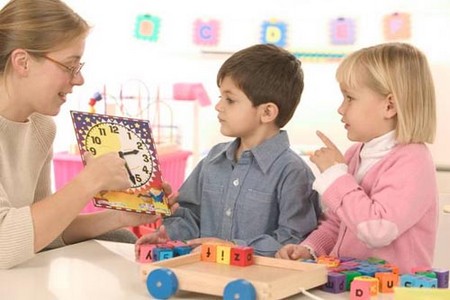Children need adult supervision—nobody would argue with that. What is debatable, however, is the type and level of supervision that parents should exercise over their child at different ages. Should you let your three-year-old play in the living room while you lie upstairs in bed having a short nap? Is it acceptable for your four-year-old to play in a fenced yard while you prepare a meal in the kitchen? Is it reasonable to allow your five-year-old to play in a park with friends while you sit some distance away reading a magazine?
These questions have no easy answers. What suits one parent may not suit another. Yet part of growing up is being allowed an increased degree of independence without mom or dad in close attendance. No matter the age of your child, consider the following factors when determining the level of supervision required:
- Your child’s ability. Don’t leave your child unsupervised during an activity that he doesn’t have the ability to cope with on his own. For example, a three-year-old will be unlikely to complete a complex jigsaw puzzle without his parent’s help, and so requires supervision in that situation.
- The nature of the activity. Some activities are unlikely to cause your child harm—for example, playing with building blocks, drawing with crayons. Here, supervision can be minimal. But other activities are potentially dangerous and consequently need closer supervision—for example, playing near a pond, using scissors.
- Your child’s maturity. Some children take longer to develop a sense of danger and are unaware of everyday hazards. Closer supervision is necessary for immature children, in case they unknowingly place themselves at risk.
- Past experience. If you know that your five-year-old becomes wild and irresponsible the moment he is out of your sight, then clearly he is not ready to be left unsupervised. However, if your child has coped with a reduced level of supervision on previous occasions, then you can afford to lessen it even further the next time.
Supervision should be decreased in slow, gradual steps, as your child progresses through childhood. If you do it too quickly, your child won’t be able to handle it. Although your child may moan because he wants to be independent as soon as possible, your supervision keeps him safe.
You can’t wrap your child in cotton wool. He has to be given regular opportunities to stand on his own two feet, without you watching over him, or he will never attain a satisfactory level of independence. Too much supervision will reduce your child’s self-confidence and his ability to look after himself when he is away from you. In situations where your child doesn’t have you to tell him what to do, where he has to make a decision on his own, he will struggle.
As a rough guide, a child two and under should never be left unsupervised. From the age of three upwards, start to allow your child times when you and he are not together—playgroup provides ample opportunities for this—and gradually increase these times over the next couple of years. By the time your child reaches school age, he will probably be mature enough to manage many tasks within his daily routine without close parental supervision. At that age, explain to your child why you want to keep an eye on him for some activities, while you are prepared to give him more freedom for others. Your child may not like what you say, but he will understand it.
Categories
Advertisements
Recent Articles
 How to Understand Bed Sizes – A Small Guide
How to Understand Bed Sizes – A Small Guide How to Select Some Must Have Kitchen Accessories
How to Select Some Must Have Kitchen Accessories Best Way to Change a Car Tire
Best Way to Change a Car Tire Best Way to Write an Affirmation
Best Way to Write an Affirmation Best Way to Take Charge of Your Financial Life
Best Way to Take Charge of Your Financial Life Best Way to Survive a Party When You Don’t Know Anyone
Best Way to Survive a Party When You Don’t Know Anyone Best Way to Stop Self Sabotaging Yourself
Best Way to Stop Self Sabotaging Yourself Best Way to Start Journal Writing
Best Way to Start Journal Writing Best Way to Speak with a Powerful Voice
Best Way to Speak with a Powerful Voice Best Way to Simplify Your Life
Best Way to Simplify Your Life Best Way to Respond to a Put-Down
Best Way to Respond to a Put-Down Best Way to Reduce Acne Breakouts
Best Way to Reduce Acne Breakouts Best Way to Recover from Dining Disasters
Best Way to Recover from Dining Disasters Best Way to Quit Your Job Gracefully
Best Way to Quit Your Job Gracefully Best Way to Make Your Own Website
Best Way to Make Your Own Website



Leave a Reply